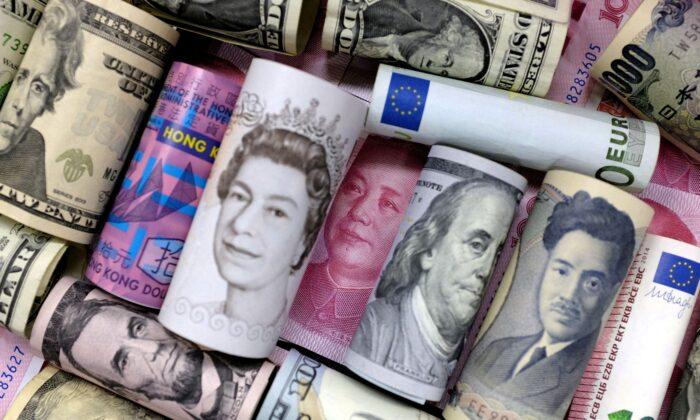SINGAPORE—The U.S. dollar held steady in cautious trade on Monday though the yen managed to stay on the stronger side of 150 per dollar, as traders looked ahead to several major central bank meetings and a slew of economic data releases this week.
The Bank of Japan kicks off its two-day monetary policy meeting on Monday, leading a week which will also see interest rate decisions from the U.S. Federal Reserve and the Bank of England.
A PMI data deluge, inflation figures in the eurozone and U.S. nonfarm payrolls at the end of the week will also be competing for the top of traders’ minds.
“It’s definitely a busy week,” said Carol Kong, a currency strategist at Commonwealth Bank of Australia.
“The BOJ meeting will be the most interesting one (given) heightened speculation over a policy tweak at this meeting.”
The Fed and BoE are both expected to keep rates steady so barring any surprises, the focus will be more around the message the policymakers communicate.
The yen was little changed at 149.63 per dollar, getting a slight reprieve after having struck a one-year trough of 150.78 per dollar last week.
A recent surge in global interest rates has heightened pressure on the BOJ to change its bond yield control, as speculation mounts that the dovish central bank could hike its existing yield cap at this week’s meeting.
“Our base case remains that the BOJ will leave its monetary policy settings unchanged, although we acknowledge that there is a risk that they will announce tweaks to its yield curve control programme,” said Ms. Kong.
Early inflation data out of Europe was a focus for traders, with price pressures easing in October in Germany’s most populous state of North Rhine-Westphalia, pointing to a substantial cooling in headline inflation in the eurozone’s largest economy.
That helped send eurozone bond yields lower, but the euro was up a touch at $1.0575.
The pound was steady at $1.2125, and that left the dollar index steady at 106.52, as investors assessed what the recent run of resilient U.S. economic data would mean for the Fed’s rate outlook.
Data on Friday showed U.S. consumer spending surged in September as households boosted purchases of motor vehicles and travelled, keeping spending on a higher growth path heading into the fourth quarter.
While expectations are for the Fed to leave interest rates on hold when it announces its policy decision later in the week, markets are pricing in a roughly 19 percent chance of a hike in December, according to the CME FedWatch tool.
U.S. nonfarm data on Friday will also be important for expectations of the Fed’s rate hike path.
“October’s jobs report takes on added importance on the back of September’s dramatic outcome, when net of revisions the cumulative payroll gain was 455k. The report will help to determine whether September was more signal or noise,” said BNP Paribas analysts in a note.
“We expect a 190k payroll print—still sturdy but not compellingly pointing to reacceleration. However, another firm print would likely see long-end yields increase further as the market reassess the degree of policy-rate restriction and inflation expectations rise.” the note added.







